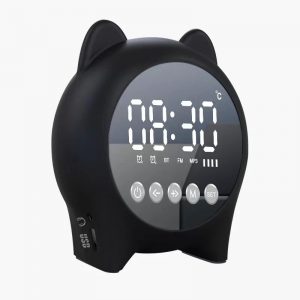1. Spatial Audio: In VR, sound is an essential element for creating a sense of presence and immersion. Earphones provide spatial audio, which means that sounds can come from all directions, including above, below, and around you. This enhances the realism and depth of the virtual environment.
2. Directional Awareness: VR experiences often involve interactions with objects and entities within the virtual world. With the help of spatial audio, you can accurately determine the direction and distance of sounds, helping you locate objects, navigate, and react to the environment.
3. Enhanced Immersion: Earphones provide a more focused and isolated audio experience compared to external speakers. This helps block out real-world distractions and deepens your sense of being present within the VR environment.
4. Realistic Environments: By replicating the way sound behaves in the real world, earphones contribute to creating realistic and immersive VR environments. For example, if you hear a sound behind you, turning your head will make the sound appear to come from a different direction, just as it would in reality.
5. Emotional Impact: Audio has a significant impact on the emotional engagement of VR experiences. Well-designed soundscapes, music, and realistic effects can evoke emotions, heightening the overall impact of the content.
6. Audio Localization: Earphones help with localizing audio sources accurately. This is important for understanding the position of characters or objects within the VR environment.
7. Privacy and Isolation: Earphones provide a private listening experience, preventing audio from leaking to the external environment. This is especially useful when you’re in a public space or want to maintain privacy.
8. Customized Soundscapes: VR developers can tailor audio experiences to specific scenarios, such as horror games, architectural visualizations, or educational simulations. Earphones allow for a more controlled and personalized audio experience.
9. Simulating Environments: Earphones enable VR creators to simulate various environments, such as crowded streets, serene forests, or echoing caves, enhancing the sense of place and immersion.
10. Multi-Sensory Experience: Combining realistic visual and audio cues creates a multi-sensory experience that tricks the brain into perceiving the virtual environment as real.
11. Interaction Feedback: Earphones can provide feedback during interactions, such as the sound of footsteps as you walk or the clinking of objects when touched, enhancing the sense of presence.
12. Directional Communication: In multiplayer VR environments, earphones can be used to facilitate directional communication, where you hear others’ voices coming from the direction they are located in the virtual space.
In summary, earphones are integral to the immersive and realistic VR experience. They provide spatial audio, enhance immersion, improve directional awareness, and contribute to the emotional impact of VR content. Whether you’re gaming, exploring virtual worlds, or engaging in educational simulations, high-quality earphones play a vital role in delivering a complete and captivating VR experience.












